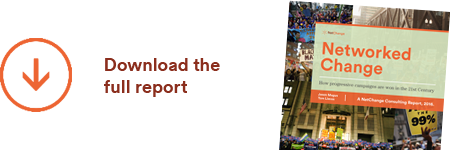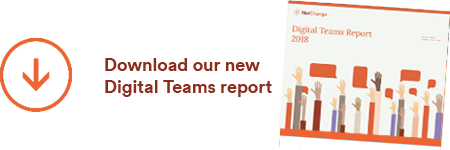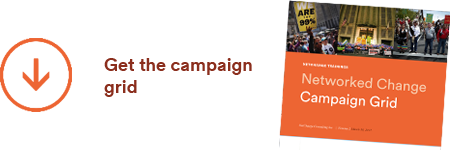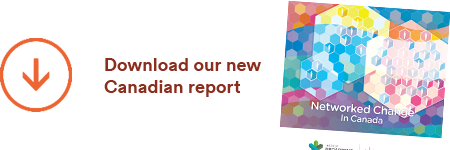Of course we are excited to launch our new site today – it’s been months of planning, creating, and collaborating to make it happen. What’s even more exciting is with this redesign – our first in 4 years – we’ve applied our “Digital Transformation Process” to ourselves. The results have been, well, transformative.
We started where we always do, by re-articulating our business goals. I know, boring stuff, but it sure helps to get clear what you need your site to pull off. For us, that meant 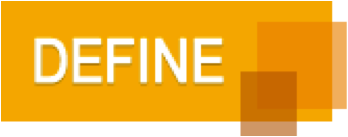 positioning us in a new way to attract the specific kind of work we most want to do, sharing more thought leadership, and building a stronger contact strategy with visitors at various levels of engagement. Our site is a business tool after all.
positioning us in a new way to attract the specific kind of work we most want to do, sharing more thought leadership, and building a stronger contact strategy with visitors at various levels of engagement. Our site is a business tool after all.
Being a social venture kind of firm, we also reviewed our mission goals: supporting the most innovative social change leaders, growing a community of collaborators, and spreading ideas about how a deep embrace of digital thinking not only leads to the best outcomes online, but can also change how an institution does its core work. This fueled our inspiration.
Our competitive review surfaced a lot of great best practices for design, storytelling, and integrating the latest social features. But the further we got out of our world and into the market, the more questions arose. What field are we really in? Where trends are shaping the future? We found some inspiring examples of firms having success straddling worlds, which seems to fit the changing times we live in. This exercise humbled us, opened our minds, and set some high bars to jump.
 The real fun started when we asked our best customers in interviews what they thought about us, and what they wanted from our site. Some surprising results came back, that probably influenced our thinking more than anything:
The real fun started when we asked our best customers in interviews what they thought about us, and what they wanted from our site. Some surprising results came back, that probably influenced our thinking more than anything:
- The clients who’ve led our most successful projects have been change-makers inside their own organizations
- Their organizations were going through some kind of major transition: for start-ups, they were growing up to reach scale; for large institutions, they were breaking themselves down into smaller, more responsive and less silo’d pods. In both cases, the way they’d done things in the past wasn’t quite working any more, organizational structures were limiting innovation, and to succeed at complex goals they needed "outsiders" to contribute. They often had to build (or re-build) trust in their very institution
- They thought we were great, did amazing work, were responsive, reliable, and talented; however, when prodded, they couldn’t really explain what we did! They knew it was big, and “way more than a website”, but they couldn’t put their fingers on what it was
- They typically heard about us through word of mouth, or a referral from a trusted colleague
- When they visited our site, which wasn’t often (they’re busy!), they skimmed it
- Every now and then they checked in on a blog post, or recent client story, but most of them were one time visitors
The last step in the research phase was to look at our analytics and traffic logs. Always a sobering affair. They showed the highest traffic areas – other than our most popular blogs – were the bios of our team. People connect with faces! Next up came stories of work we did for others. Being able to read a story, and imagine oneself as the protagonist is one of the oldest tricks of storytelling, and it was working on our site. No one looked at the rest of content we had so lovingly crafted for them. Sigh.
Armed with all this data, we set out to understand the patterns within and deeper meanings behind it. This led to insights around our users that focused our own strategy and made us think in a very different way about not just what was possible but what was needed. We’ll write up a separate post about how we built the insights into the user experience, design, tech, and engagement features.
But let's get back to the start. How did building a new site change the very core of our organization? We now knew we had to:
- Be bold: our target market is a very unique kind of person working in an even more unique institutional context. We can’t be afraid to speak only to them and use concepts that won’t resonate for most other visitors
- Use fewer words: people aren't reading online so keep it short! We built a very small site, with very few pages, and large skimmable statement blocks
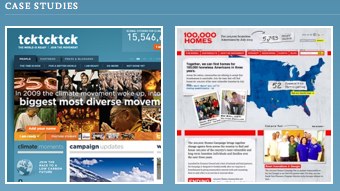
- Show the work: share stories of impact in a way that our potential customers see themselves and their challenges being solved, which builds trust that we can do it for them
- Integrate engagement: the site is all about building relationships, and not everyone is willing to pick up the phone. So we offer ways to stay connected in light and fun ways
- Grow our capacity: managing new social channels, writing regular thought leadership pieces, and case studies about our work isn’t something we’ve always made time for. We have to now
- Think big: by reviewing our mission we dialed it up a notch. We’re here to help transform the most important institutions of our times to embrace web values so they can become "movement-leaders". This is infusing our day to day work with much more purpose and it inspires us every day
So just like with our clients, a seemingly simple web project has catalyzed a wholesale review of every aspect of our business: from our purpose to our goals, our story to our audience, the way we talk about our work to how we manage new content and channels.
There’s a saying in tech that we need to “eat our own dog food”, which basically means, do the work you’re on about to make sure it works. It sure has for us.
How do you think we did? Consider leaving a comment below.






